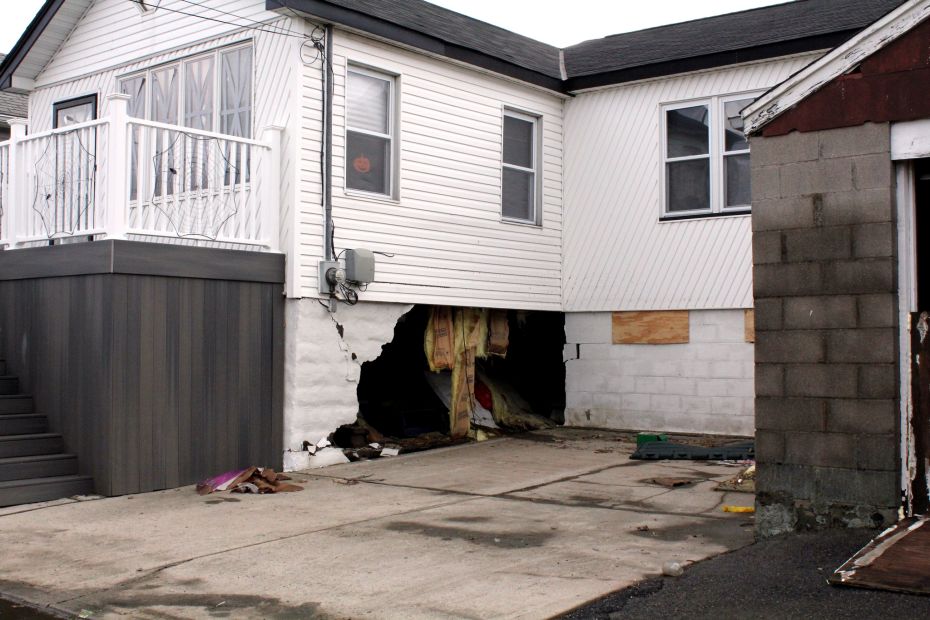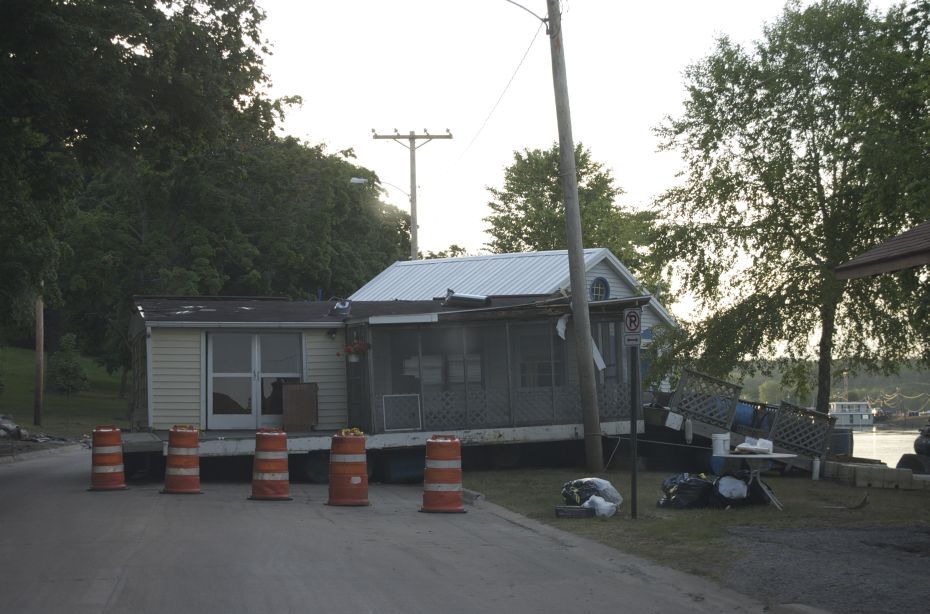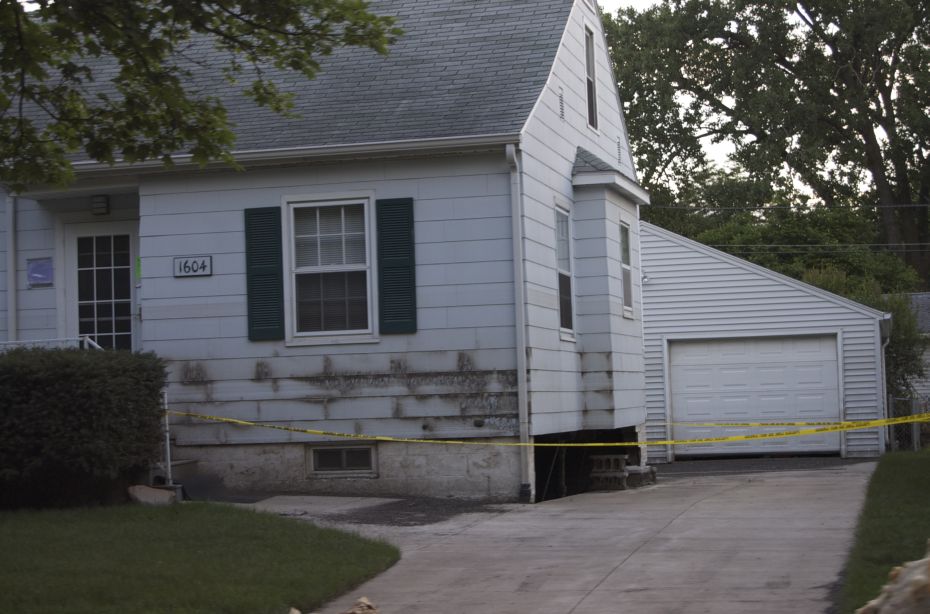
Hurricane Sandy. Old Howard Beach, New York City, New York, USA. October 31, 2012
In addition to the dangers that they pose to humans, floods leave behind a broad array of destruction in their wake, demolishing roads, washing away natural features of the landscape, and ruining buildings. Often, these damaged buildings are people’s homes. Floods can cause a shocking amount of structural damage to a house, especially when water enters the home and is allowed to remain there for an extended period of time.
Water Pressing Against the House
During a serious flood, your home might bear the lateral impact of waves crashing into it. Or, even if there are no visible waves present, the floodwater around your house could still be moving, potentially with an active current. This movement creates hydrodynamic loads that continually push against the building, weakening its structure, while also depositing soil or other sediment against the house. The weight of this sediment buildup provides further pressure on the house, adding to the damage.
If floodwater enters your home, it will go to work immediately on the house’s building materials, gradually compromising them as long as the water is allowed to remain in the house. After a flood recedes outside, a building can remain waterlogged for a long period of time, unless you take immediate steps to dry the house with heavy duty fans and other moisture control equipment.
Another structural danger posed by floods is groundwater pressure, pushing on your home’s foundation and basement. Even if the flood never got high enough to enter your house or if you clean up any interior floodwater promptly, the ground outside could remain saturated for an extended period of time. This water creates hydrostatic pressure, pressing inward on your foundation or basement walls, and potentially resulting in cracks or a collapse.

Water line from flood waters visible on buildings. Iowa flood of 2008. Cedar Rapids, Iowa, USA. June 23, 2008
Assessing Damage
During or after a flood, as you assess the damage done to your home, proceed with extreme caution, involve experts at any sign of serious or complex damage, and leave the house quickly if your safety is threatened in any way. In addition to structural damage, floods can carry the risks of electrocution and gas inhalation, among other dangers. Learn more in our article about about water damage safety issues.
Once you have taken the necessary safety precautions, inspect your house for signs of damage. Photograph everything, as these pictures could prove invaluable when dealing with a flood insurance provider. Consider what building materials in your home have been waterlogged – are they weight bearing? In addition to water damage, look for signs that your home’s structure has been altered or weakened, for instance corners that used to be 90 degrees, but have been pushed or tugged into a different angle, even slightly. Look for cracks, bulges, and sagging in floors and walls throughout your house, with particular attention given to the basement. If you notice that your ceilings sag and see cracks in your basement or foundation walls, they likely will require replacement.
Ultimately, if floodwater has entered your home, it is wise to seek the advice of an expert to help you discern how much damage has been done and assess whether you can repair your house or if demolition is the only viable course of action. Unfortunately, this decision might not be up to you, as many municipalities have code requirements that mandate demolition if the damage is extensive enough, or call for specific repairs which might be less realistic then demolition itself. If you have flood insurance, your provider may cover some of these costs, so be sure to understand exactly what your policy covers before making a decision.

Iowa flood of 2008. Cedar Rapids, Iowa, USA. June 23, 2008
Demolition
If you decide to tear down your house, the demolition process itself can be fairly complex. You will need to acquire the necessary permitting from your town and have all your utility lines safety turned off and disconnected by professionals before demolition takes place. If your home contains any dangerous or restricted building materials, you will need to follow governmental regulations for their removal and disposal.
Once your contractor knocks down the house, usually via bulldozer, the next step can be surprisingly challenging. You need to deal with the debris. There are strict regulations around this, designed to protect against ground contamination. Although you may be able to get a permit to bury the rubble on your property, there is a good chance that you will have to pay for it to be hauled away to a specific disposal site.
If you do demolish your existing home, your next decision involves whether to rebuild on the same land or go live somewhere else. Of course, you will want to get a good sense for the likelihood of your existing home site flooding again. Investigate your area’s flood zone maps and understand where your property lies in relation to flood planes.
Regardless of whether you rebuild or move away, you will probably have to navigate additional regulatory hurdles before the process is over. If you rebuild, your town will likely require you to follow a set of procedures for building on the flood damaged site, for example, making sure that the new structure is at a sufficient elevation to help prevent future flood damage. These regulations could end up being similar to those governing the repair of a flood-damaged house, and sometimes they prove complex enough to make it more sensible to move away instead of rebuilding on the old site. If you decide to move, you will probably still have to comply with regulation, as your town could require you to restore the flood damaged property to mitigate the effects of the flood and remove traces of your old residence.

Iowa flood of 2008. Cedar Rapids, Iowa, USA. June 23, 2008
Image sources: Pamela Andrade, Christine, Christine, and Christine
--------------
This article is intended for informational purposes only. Before beginning any construction project at your home or taking steps to prepare for an emergency, please ensure that you take necessary safety precautions; consult construction professionals, your local authorities, and disaster safety experts whenever necessary. Water Damage Defense accepts no responsibility for the actions you take during an emergency or as you prepare for one.
